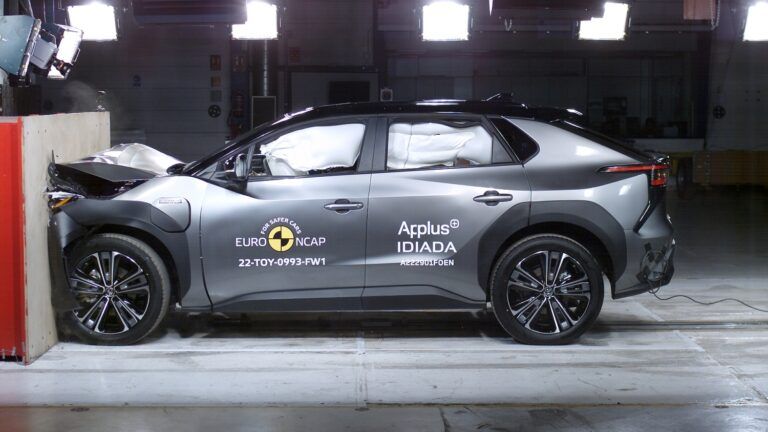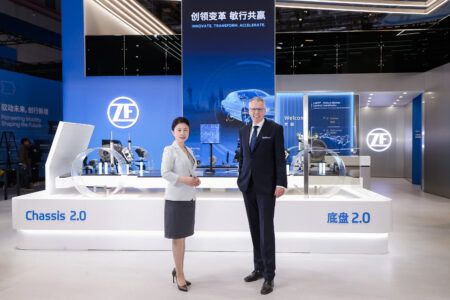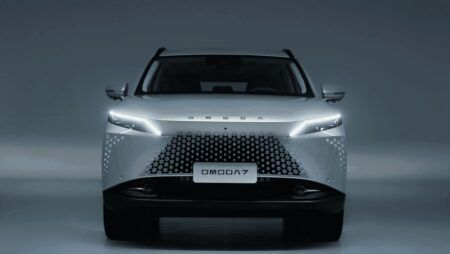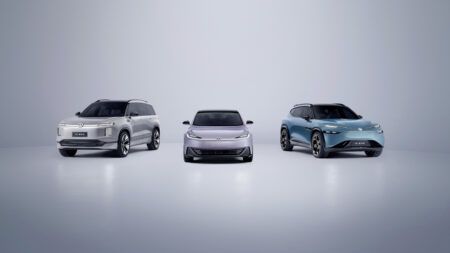In its latest round of vehicle safety ratings, Euro NCAP has published the scores for a number of brands, including the most recent additions to Nissan’s electrified line-up as well as the all-electric Subaru Solterra. The full list can be viewed here.
Nissan
Nissan’s pure electric Ariya vehicle and the X-Trail both achieved five stars. The existing five-star ratings for Juke and Qashqai have been expanded to include the Hybrid and e-POWER versions respectively. The Qashqai and X-Trail are both built on the Alliance CMF-C architecture.
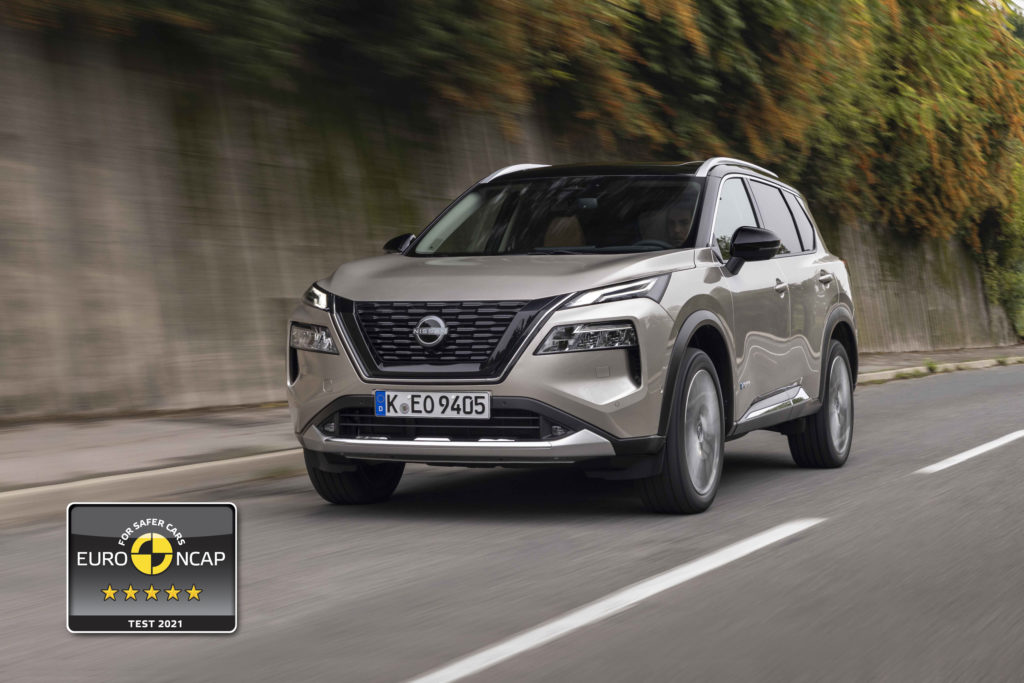
In the adult occupant protection category both vehicles scored highly, with the Ariya achieving a score of 86% and the X-Trail achieving 91%. The two vehicles are built with ultra-high-strength steel in key areas to improve rigidity while allowing the force of an impact to be absorbed and reduced before reaching the passenger safety cell. The addition of a central airbag on both vehicles to prevent the collision of heads between the driver and front seat passenger in the event of a side impact contributed to lateral impact scores of 14.9 for the Ariya and 16 for the new X-Trail.
In terms of child occupant protection, both vehicles achieved near identical ratings, with the Ariya at 89% and the new X-Trail 90%. In the crash-test assessment for child occupants based on six and 10-year old children, the X-Trail scored 23.3 points out of a possible 24. The Ariya scored 22.9 out of 24. Both vehicles also achieved a maximum 12 points for the installation of Child Restraint Systems (CRS).
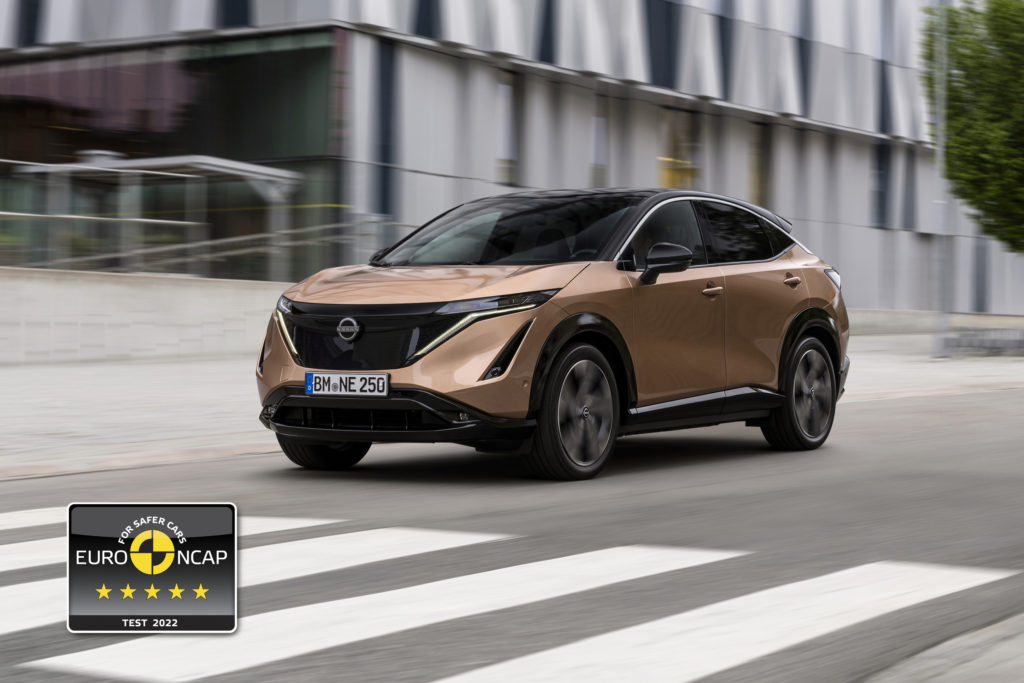
In the category of testing that assesses the vehicle’s ability to identify and alert drivers to pedestrians or other exposed road-users, the new X-Trail achieved an overall score of 70%. In the same assessment, the Ariya achieved 74%. Both vehicles feature several active safety aids, including Intelligent Emergency Braking, which warns the driver and applies the brakes if the car anticipates an impact with a vehicle, pedestrian or cyclist. Equally, Moving Object Detection alerts the driver to a possibly unseen object in proximity to the vehicle.
Both the X-Trail and the Ariya also scored highly in accident prevention, with a 95% and 93% rating respectively, aided by an suite of technologies including Autonomous Emergency Brake (AEB), which identifies when the car in front is braking and will start to brake the vehicle. Both models also feature Intelligent Blind Spot Intervention, which senses when another vehicle has not been seen by the driver in a neighbouring lane and will actively steer the vehicle back into lane and away from the danger.
Subaru
Subaru UK announced that the all- new Solterra (European specification) has achieved the maximum five-star overall rating in the 2022 European New Car Assessment Programme (Euro NCAP). The Solterra registered scores in all four-assessment areas (Adult Occupant, Child Occupant, Vulnerable Road Users, Safety Assist) that stand above the minimum threshold required.
The all-electric Subaru Solterra attained 91% in Safety Assist in the Small Off-Road class, according to the latest applicable test, whilst achieving a maximum score in occupant status monitoring, including driver monitoring and seatbelt reminder. In addition, it has also received a very high score for AEB Car-to-Car (pre-collision system) at 5.8/6 pts, while performing well in Emergency Lane Keep Assist, Lane Keep Assist and Human Machine Interface sections.
Overall, the Autonomous Emergency Braking (AEB) system performed well in compatibility testing. The all-new Solterra is equipped with a seatbelt reminder system, which is fitted as standard to both the front and rear seats, as well as a system to detect driver fatigue (i.e. Driver Monitoring System). The lane support system (Lane Tracing Assist) gently corrects the vehicle’s path if it is drifting out of lane, and also intervenes in some more critical situations. A speed assistance system detects the local speed limit thanks to the Traffic Sign Reader and the driver can choose to set the limiter via the Speed Limiter, or let the system do so automatically.
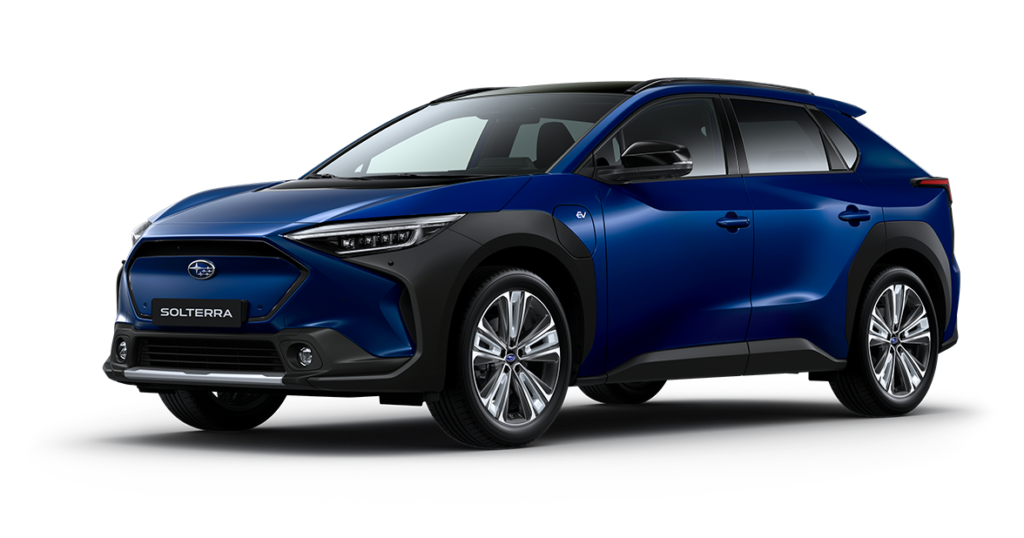
For the Adult Occupant assessment area, the Solterra attained the maximum score in rescue and extrication. In addition, it did extremely well in lateral impact and rear impact. The tests showed that while the passenger compartment remained stable in the frontal offset test, the dummy readings indicated good protection of the knees and femurs of both the driver and passenger. Control of excursion, the extent to which a body is thrown to the other side of the vehicle when it is hit from the far side, was found to be good.
The Solterra has a countermeasure to mitigate against occupant-to-occupant injuries in such impacts. The system performed well in Euro NCAP’s test, with good protection of occupants’ heads. Tests on the front seats and head restraints demonstrated good protection against whiplash injuries in the event of a rear-end collision. A geometric analysis of the rear seats also indicated good whiplash protection. An advanced eCall system is fitted which alerts the emergency services in the event of a crash and a system which automatically applies the brakes to prevent secondary collisions.
For the Child Occupant assessment area, the Solterra attained a good score score in Crash Test Performance (both frontal and lateral impact) based on 6 and 10 year old children, as well as CRS installation, scoring 15.5/16 pts and 3.7/4 pts respectively. Good or adequate protection was provided for all critical body regions during the frontal offset and side barrier tests, and maximum points were scored in this part of the assessment. The front passenger airbag can be disabled to allow a rearward-facing child restraint to be used in that seating position.
For the Vulnerable Road Users assessment area, protection of the head of the struck pedestrian was predominantly good or adequate, while the bumper offered good protection to the legs of pedestrians thanks to the strategically placed crumble zones. The AEB system showed that it can respond to vulnerable road users as well as to other vehicles. The system performed well in tests of its response to pedestrians and cyclists, with collisions avoided in most test scenarios.


